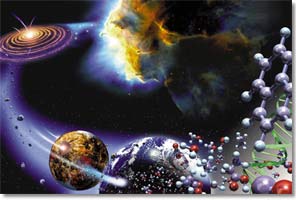Skip to: site menu | section menu | main content
Early
Earth
Research on the coevolution of life and the environment Information on the early Earth and its evolution can
be found on the links below.
External links:
The Early Earth: Life and atmospheric change

Research interests
Earth is currently our only example of a habitable planet.
Consequently, studying its long-term evolution is essential for
understanding why the Earth became habitable and why terrestrial
life has persisted for billions of years.
Earth's climate has
been influenced by the Sun, which has gradually brightened by
25-30% in the last 4 billion years, and by the presence of three
major greenhouse gases, carbon dioxide (CO2), water
vapour (H2O), and methane (CH4) [1,2].
Methane was probably an important greenhouse gas during the first
half of Earth's history. The rise of atmospheric oxygen (O2)
around 2.4 billion years ago may have caused the collapse of the
methane greenhouse that triggered worldwide glaciation at that
time. In addition to altering the climate, the rise of O2
permitted the evolution of complex life and created a
stratospheric ozone layer that blocks out solar ultraviolet
radiation [3,4].
Understanding
the influence of biology on the evolution of Earth's atmosphere
could help us find life on planets around other stars. Oxygen,
ozone, and methane are only produced in simultaneous abundance
by life. These gases create absorption lines in the spectra of
light from planets around other stars that may allow us to
identify the presence of life.
References:
[1] D. C. Catling and J. F. Kasting, Atmospheric Evolution on Inhabited and Lifeless Worlds, Cambridge University Press, New York.
[2] J. F. Kasting and D. C. Catling, Evolution of a habitable planet, Annual Reviews of Astronomy and Astrophysics, 41, 429-463, 2003.
[3] D. C. Catling and M. Claire, How Earth's atmosphere evolved to an oxic state: A status report, Earth Planet. Sci. Lett., 237, 1-20, 2005.
[4] D. C. Catling, C.R. Glein, K.J. Zahnle, and C. P. McKay. Why O2 is required by complex life on habitable planets and the concept of planetary "oxygenation time", Astrobiology, 5, 415-438, 2005.